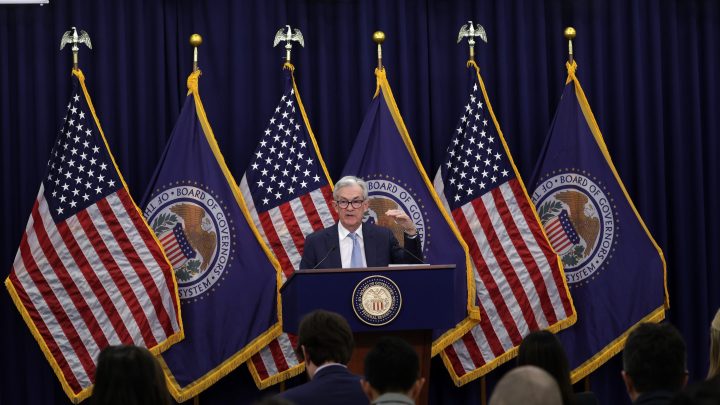
Why traders will be hanging on the Federal Reserve’s every word Wednesday
Why traders will be hanging on the Federal Reserve’s every word Wednesday

“All eyes are on the Fed.” We say this lately whenever the Federal Reserve’s Federal Open Market Committee meets to set interest rates, and Tuesday was the start of their two-day January huddle.
The big question is, after raising interest rates 11 times to battle inflation — from March 2022 to July 2023 — will the Fed be cutting rates soon?
The bond market, where traders bet on these changes in interest rates, has been signaling there’s almost no chance of a rate cut at the FOMC meeting Wednesday, but there may be a cut in March, though more likely in May or June.
And why do we care whether, and when, and by how much the Fed is likely to cut rates? Why do we spend so much time dissecting Fed Chair Jerome Powell’s statements to figure out what he’s thinking?
The words that come out of an FOMC meeting and Powell press conference can seem like a secret language meant only for investors and economists.
“What the Fed does, often it’ll sound like the wizard behind the curtain, and it’s just this abstract ’25 basis points.’ Whatever is that?” said former Fed economist Claudia Sahm. “The decisions made by the Federal Open Market Committee, they affect all of our lives. If you’re someone trying to buy a home, if you’re a small business trying to get a loan, it matters to you. I mean, interest rates are high.”
How soon and how much borrowing costs come down could determine whether your company can buy you a new computer or your adult kids can afford a first home.
The Fed’s interest-rate machinations can also be read as a kind of “weather report,” said Sam Stovall, chief investment strategist at CFRA Research.
“What does the Fed know that we don’t about the overall economy?” he said.
The pace and number of rate cuts could be telling, Stovall said.
“If the Fed does cut four, five, six times between now and the end of the year, that many rate cuts probably implies that the economy is headed for a recession, and not a mild one,” he said.
Investors have a good reason to try to predict the timing and magnitude of rate cuts, said Quincy Krosby, chief global strategist at LPL Financial.
“The market tries to assess every word. Why? Because they make money on it,” she said.
For stock and bond investors, that means knowing when to hold and when to fold as interest rates change, because those changes influence the value of their securities — and the securities they may be sizing up for possible purchase.
Without the Fed’s statements and “dot plots” and all the rest to analyze, Sam Stovall said he’d have less to do.
“Why would my company need someone like me if nobody’s going to be anticipating anything? The market tends to react most violently opposite unanticipated events,” he said.
So, the better we understand what the Fed says and does, the less economic uncertainty there’ll be.
There’s a lot happening in the world. Through it all, Marketplace is here for you.
You rely on Marketplace to break down the world’s events and tell you how it affects you in a fact-based, approachable way. We rely on your financial support to keep making that possible.
Your donation today powers the independent journalism that you rely on. For just $5/month, you can help sustain Marketplace so we can keep reporting on the things that matter to you.











